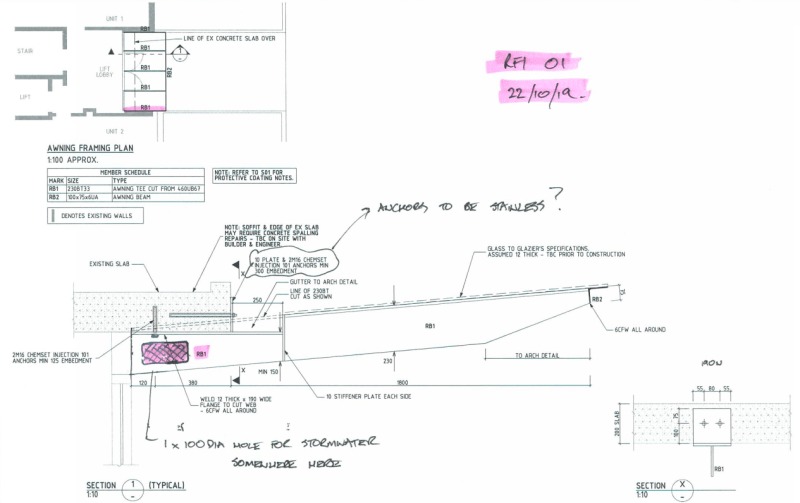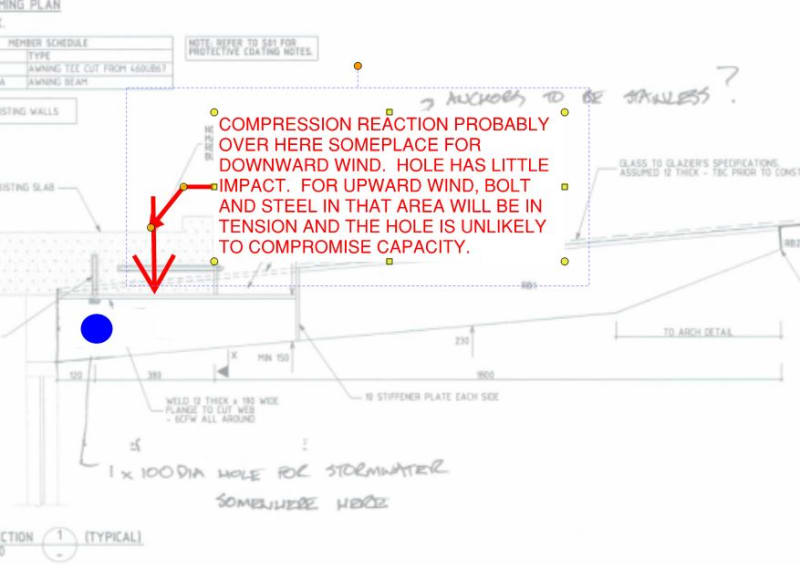We have an awning beam as part of a frame supporting 12mm thick glass that needs a 100mm diam hole cut in it directly below an anchor bolt to allow a stormwater pipe to pass through. My first thought is to check the section capacity with the reduced member depth at the opening, however, I am certain there is more that needs to be considered before giving this the OK.
Before even doing any calculations I have a feeling it will be fine as the direct bearing of the top flange on the underside of the slab is probably acting as more of a support than the anchor bolt itself since that section beneath the slab will be in uplift.
Note: only the awning beam highlighted in plan needs an opening cut. The rest will remain as designed.
Any advice or a point in the right direction would be appreciated

Before even doing any calculations I have a feeling it will be fine as the direct bearing of the top flange on the underside of the slab is probably acting as more of a support than the anchor bolt itself since that section beneath the slab will be in uplift.
Note: only the awning beam highlighted in plan needs an opening cut. The rest will remain as designed.
Any advice or a point in the right direction would be appreciated


